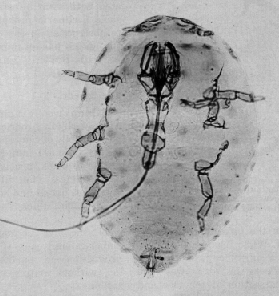Adelgidae on:
[Wikipedia]
[Google]
[Amazon]
The Adelgidae are a small family of the Hemiptera closely related to the aphids, and often included in the Aphidoidea with the Phylloxeridae or placed within the superfamily Phylloxeroidea as a sister of the Aphidoidea within the infraorder Aphidomorpha. The family is composed of species associated with
Facts on File
, 1993, Adelgids only lay eggs, and never give birth to live nymphs as aphids do. Adelgids are covered with dense woolly wax. A complete adelgid life cycle lasts two years. Adelgid nymphs are known as sistentes, and the overwintering sistentes are called neosistens. Rain can kill adelgids by dislodging eggs and sistentes from trees.''The Balsam Woolly Aphid Problem in Oregon and Washington''
Norman E. Johnson and Kenneth H. Wright, Research paper No. 18,


pine
A pine is any conifer tree or shrub in the genus ''Pinus'' () of the family Pinaceae. ''Pinus'' is the sole genus in the subfamily Pinoideae.
''World Flora Online'' accepts 134 species-rank taxa (119 species and 15 nothospecies) of pines as cu ...
, spruce
A spruce is a tree of the genus ''Picea'' ( ), a genus of about 40 species of coniferous evergreen trees in the family Pinaceae, found in the northern temperate and boreal ecosystem, boreal (taiga) regions of the Northern hemisphere. ''Picea'' ...
, or other conifers, known respectively as "pine aphids" or "spruce aphids". This family includes the former family Chermesidae, or "Chermidae", the name of which was declared invalid by the ICZN in 1955. There is still considerable debate as to the number of genera within the family, and the classification is still unstable and inconsistent among competing authors.
There are about fifty species of adelgids known. All of them are native to the northern hemisphere, although some have been introduced to the southern hemisphere as invasive species
An invasive species is an introduced species that harms its new environment. Invasive species adversely affect habitats and bioregions, causing ecological, environmental, and/or economic damage. The term can also be used for native spec ...
. Unlike aphids, the adelgids have no tail-like cauda and no cornicle
The cornicle (or siphuncule) is one of a pair of small upright backward-pointing tubes found on the dorsal side of the 5th or 6th abdominal segments of aphids. They are sometimes mistaken for cercus, cerci. They are no more than pores in some spe ...
s.''Bugs of the World'', George C. McGumoFacts on File
, 1993, Adelgids only lay eggs, and never give birth to live nymphs as aphids do. Adelgids are covered with dense woolly wax. A complete adelgid life cycle lasts two years. Adelgid nymphs are known as sistentes, and the overwintering sistentes are called neosistens. Rain can kill adelgids by dislodging eggs and sistentes from trees.
Norman E. Johnson and Kenneth H. Wright, Research paper No. 18,
United States Forest Service
The United States Forest Service (USFS) is an agency within the United States Department of Agriculture, U.S. Department of Agriculture. It administers the nation's 154 United States National Forest, national forests and 20 United States Natio ...
, United States Department of Agriculture, April, 1957

Genera
* '' Adelges'' Vallot, 1836 * '' Aphrastasia'' Börner, 1909 * '' Cholodkovskya'' Börner, 1909 * ''Dreyfusia
''Dreyfusia'' is a genus of true bugs belonging to the family Adelgidae.
Species:
* ''Dreyfusia merkeri''
* ''Dreyfusia nebrodensis''
* ''Dreyfusia nordmannianae''
* ''Dreyfusia piceae''
* ''Dreyfusia prelli''
References
Adelgidae
{{st ...
'' Börner, 1908
* '' Eopineus'' Steffan, 1968
* '' Gilletteella'' Börner, 1930
* '' Pineus'' Shimer, 1869
* '' Sacchiphantes'' Curtis, 1844
See also
* Balsam woolly adelgid * Gall adelgid * Hemlock woolly adelgid * Pineapple gall adelgidReferences
External links
* * {{Taxonbar, from=Q2562960 Insect pests of temperate forests Hemiptera families Taxa named by Henri Schouteden